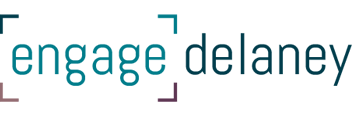6 Ingredients for Successful Engagement
Today is Day 3 of the IAP2 Foundations program, and we’re coming to the end of the planning component. Tomorrow and Friday are all about techniques, so we’re going to learn about different tools to engage stakeholders – everything from interviews and surveys to coffee klatches and advisory groups.
But before we get to the fun of learning what, exactly, is a charrette, here are a few key ingredients for building a successful engagement process.
- 1. Thorough planning: In the words of today’s trainer, Richard Delaney: “Hope is not a strategy.” I’ve written several blog postings about the importance of P2 planning, but it can’t be overstated: careful, detailed planning will give you the best chance for delivering meaningful engagement that leads to sustainable decision-making.
2. Project management: Ideally, public engagement planning is undertaken with a team. However, designating a project manager or lead is a good strategy for keeping the process moving. A great project manager will be organized and pay attention to details. Project management can and should include outlining clear roles and responsibilities, and creating work plans so everyone on the team can track who is doing what in a defined timeline.
- 3. Stakeholder-centric: If engagement plans are made with the stakeholders in mind, there’s a greater chance that people will participate AND be satisfied with the process. Of course, the plan needs to consider the decision-maker’s needs, but the goal is to get stakeholders involved.
- 4. Input/feedback management and analysis: When creating the engagement plan, it’s important to think about how stakeholders’ feedback will be collected and used. How will comments be managed? How will input be analyzed? In order to help stay on track, keep coming back to what kind of information the decision-maker needs to make the decision.
- 5. Evaluation and follow-up: Once the engagement is complete, it’s useful to look back at the P2 objectives and ask yourself if they were met. It’s also great to check in with stakeholders on the process. An evaluation form, survey or other tools will help you understand if people were satisfied with the engagement. Another post-engagement activity is following up with stakeholders to let them know how their input was used. Both evaluation and follow-up help build future success and build relationships. They can make future engagement easier and create a “culture of consultation.”
- 6. Authentic communication: Effective communication is the foundation of all engagement activities. People can’t get involved if they don’t understand the issue or process. Authentic communication is truthful, clear, consistent, relevant, timely and accessible. Talk to your audience to find out how to get them involved. As Richard said, “Getting people engaged doesn’t happen by accident.” Part of effective P2 communication is telling stakeholders why this decision is relevant to them.
Incorporating all of these elements will help you design and deliver an inclusive, well-organized and authentic engagement that results in valuable input for your decision maker and satisfied stakeholders.
Be sure to check this space tomorrow for some interesting, cool engagement techniques.

